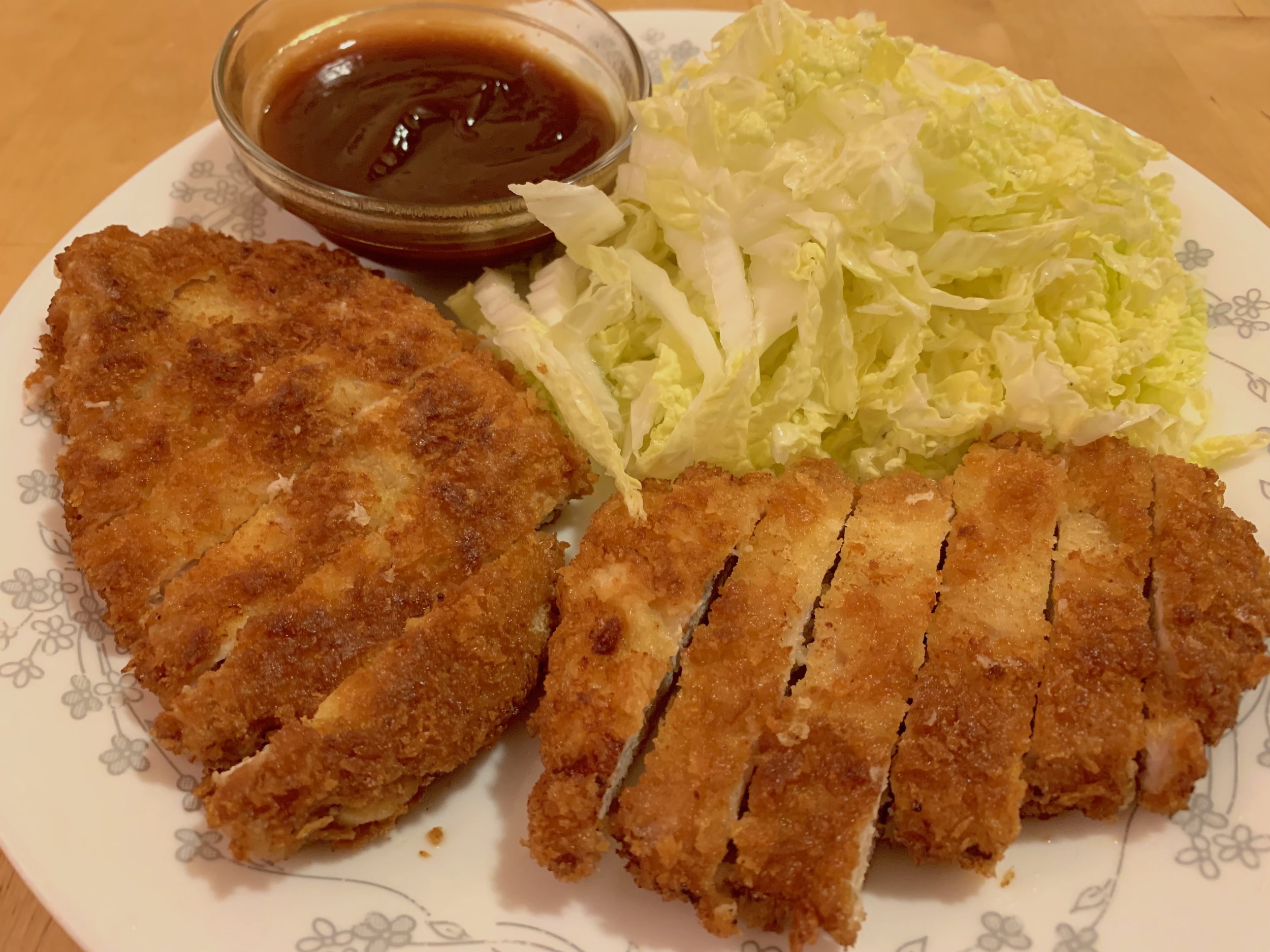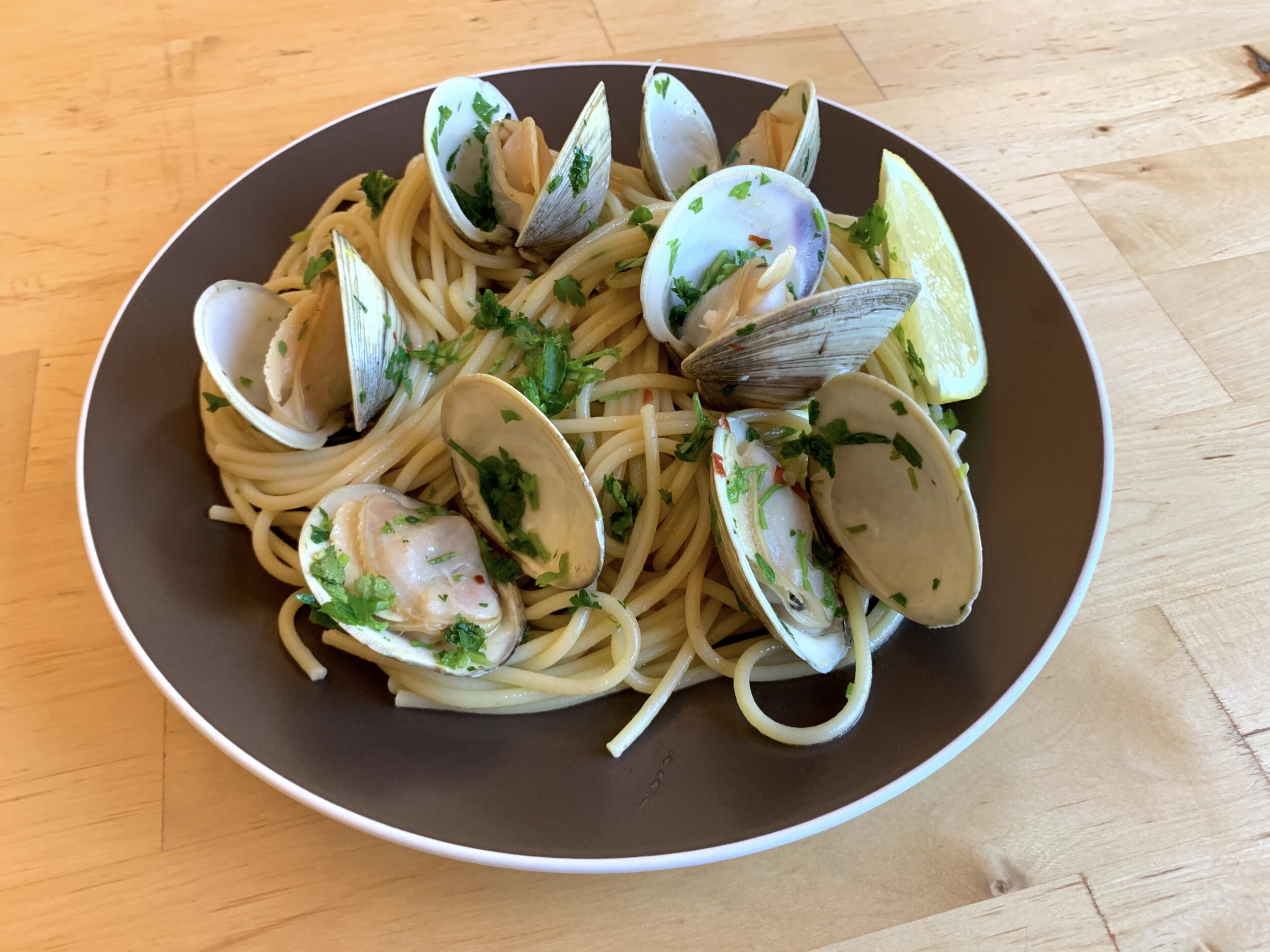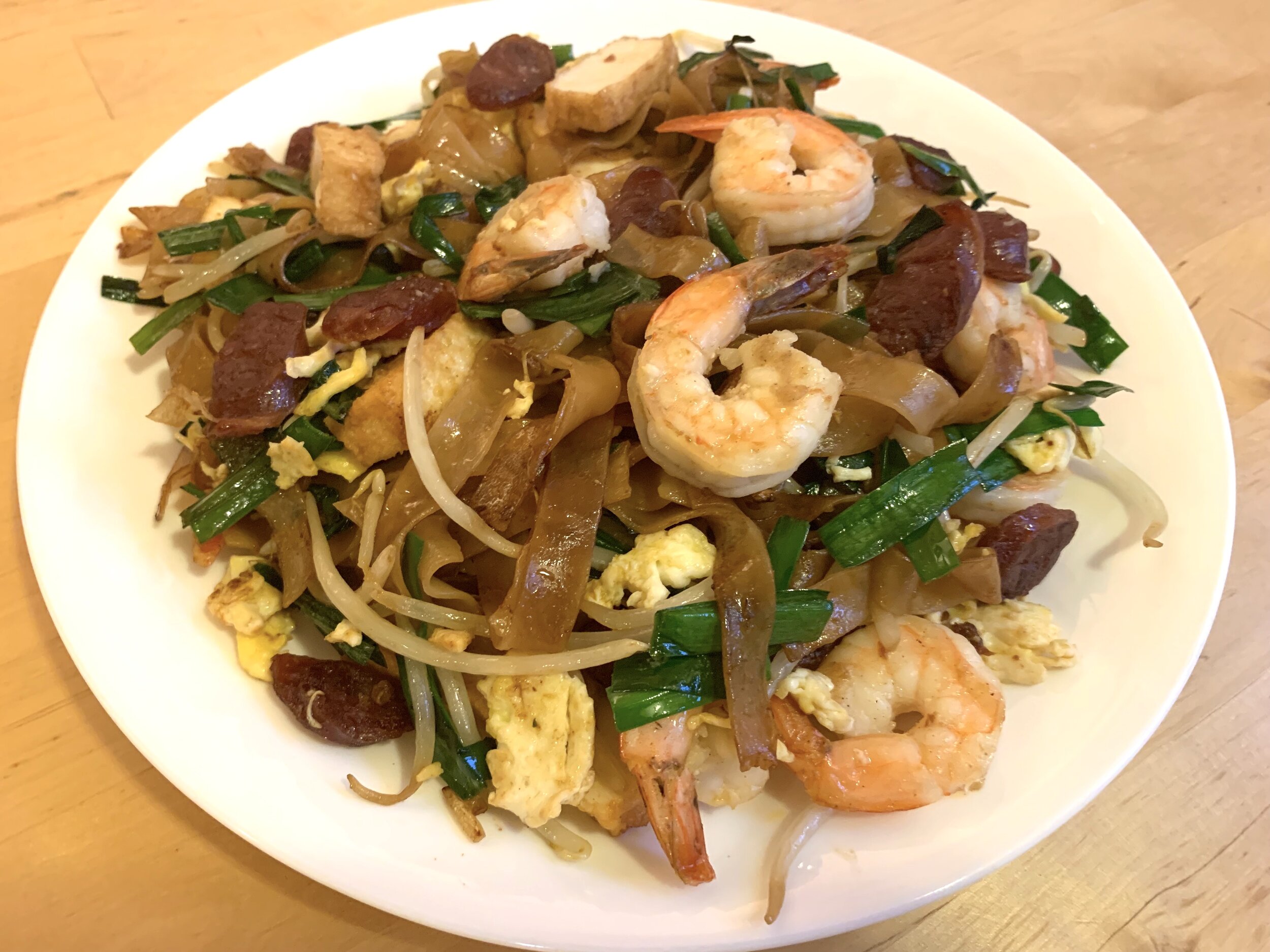Spaghetti Carbonara

Spaghetti alla carbonara is a popular Italian pasta dish, pasta tossed with a rich and creamy sauce made from cheese, cured pork, eggs—and no cream. Carbonara hails from the city of Rome, with the first recorded recipes dating to the 1940s and 50s. The dish is an evolution of several older pasta dishes, including pasta alla gricia, which contains pancetta, cheese, but no eggs, and pasta cacio e uova, which contains lard, eggs, and cheese, but no pork.
The origins of the “carbonara” name are obscure. Some believe that the dish is named for Italian coal miners, while others say that the name refers to the coarsely ground black pepper in the dish, which looks like flecks of charcoal. The most intriguing possibility, however, is that the dish was named in tribute to the Carbonari, an Italian secret society which played a major role in the unification of Italy in the 19th century. [1]
While carbonara is made from humble ingredients, the technique required to cook the sauce without curdling the eggs can be daunting for many. However, proper heat management can take much of the difficulty out of making this classic dish at home!
Ingredients
½ lb spaghetti
4 oz pancetta or guanciale, diced
3 oz Pecorino Romano cheese, grated
3 eggs (2 whole + 1 yolk)
1 tsp black pepper or to taste
Salt to taste
Begin by bringing a large pot of salted water to a boil. When the water comes to a boil, add half a pound of spaghetti to the pot and cook according to the package instructions until al dente. For most spaghettis, this should take about 10 minutes.
When the pasta goes into the pot, heat a skillet over medium heat on a separate burner. Dice the pancetta or guanciale into ½ inch cubes, and add it to the skillet. Cook the pork, stirring occasionally, until the fat has rendered and the meat becomes crisp, about 6-8 minutes. If your pancetta is particularly lean, add a bit of olive oil to the pan to supplement the rendered fat.
While the pancetta cooks, we will prepare the sauce mixture. Beat together two whole eggs, one egg yolk, and 3 oz (about ½ a cup) grated Pecorino Romano cheese. [2] Set this mixture aside.
When the pancetta has rendered most of its fat and is crisp, turn the heat off on the skillet. We want to let the skillet cool for about 3 minutes—if we timed everything right, this should be about how long it takes for the pasta to finish cooking! The skillet will still be warm enough to contribute some residual heat to cook the eggs, but not so hot that the sauce will turn into scrambled eggs when introduced to the heat.
When the spaghetti is al dente, drain the pasta. Remember to reserve 1 cup of the starchy pasta cooking water—we might use some of it to loosen the sauce later. Do not run the pasta under cold water, as we need the heat in the noodles!
Add the freshly cooked and drained pasta to the warm skillet, and immediately pour over the egg and cheese mixture. Stir immediately, and continue stirring until the sauce thickens into a creamy consistency. The sauce will cling to the pasta, combining with the starch on the surface of the pasta and cooking the eggs through without curdling. Continue tossing the noodles until no loose liquid remains. If the sauce is looking too thick, loosen it with a few tablespoons of pasta water and continue to stir.
Once you are satisfied with the consistency of the sauce, season generously with freshly ground black pepper, and with salt to taste. Remember that both the pancetta and the Pecorino are quite salty, so be sure to taste before salting. Serve the pasta immediately, topping with some freshly grated Pecorino at the table.
Substitutions
You can double this recipe to make 4 servings, but I do not recommend preparing more than 4 servings in the same pan, as it is difficult to stir sufficiently and quickly enough to cook the sauce appropriately. Other long and thin pastas, such as fettucine, bucatini, or linguine, also work well for carbonara. For a richer sauce, you can increase the ratio of yolks to egg whites, using 1 whole egg and 2 egg yolks.
If you don’t have access to any Italian cured meats, bacon can be used as a substitute for pancetta or guanciale. [3] You can also choose to partially or completely substitute Pecorino Romano with Parmesan cheese, which has a similar texture but a milder flavor.
[1] The Carbonari was a secret revolutionary society active in the 1800s on the Italian Peninsula, agitating for liberal governance and the unification of the Italian states into a single nation. While Carbonari as an organization dissolved after the failed Revolution of 1820, former members, most notably Giuseppe Garibaldi and Giuseppe Mazzini, went on to lead the revolutionaries in the War for Italian Independence.
[2] Pecorino Romano, a hard cheese made from sheep’s milk, is one of the oldest types of cheese. Pliny the Elder wrote of cheeses being produced using the same method in Ancient Rome, 2000 years ago. The hard, calorie-dense cheese was ideal for consuming on the march, and a daily ration of Pecorino Romano was issued to legionaries of the Roman Empire.
[3] Some food historians theorize that carbonara first emerged in Rome in 1944, after the fall of Fascist Italy and American occupation of the city. With the US 5th Army came civilian food aid, including American slab bacon and eggs—ingredients not readily available in wartime Italy. It is therefore possible that the earliest versions of carbonara were indeed made with American bacon.
Recipe
Prep Time: 10 min Cook Time: 10 min Total Time: 20 min
Difficulty: 3/5
Heat Sources: 2 burners
Equipment: skillet, large pot
Servings: 2
Ingredients
½ lb spaghetti
4 oz pancetta or guanciale, diced
3 oz Pecorino Romano cheese, grated
3 eggs (2 whole + 1 yolk)
1 tsp black pepper or to taste
Salt to taste
Instructions
1. Bring a large pot of salted water to a boil. Add the spaghetti and cook according to package instructions until al dente, about 10 minutes.
2. Meanwhile, add the diced pancetta or guanciale to the skillet over medium heat and cook, stirring occasionally, until the fat has rendered and the meat has crisped, about 6-8 minutes.
3. While the pancetta cooks, beat together two whole eggs, one egg yolk, and 3 oz grated Pecorino cheese.
4. When the pancetta is crisped, turn off the heat on the skillet and let the skillet cool until the pasta is ready, about 3 minutes.
5. When the spaghetti is al dente, drain the pasta, reserving 1 cup of the pasta cooking water.
6. Add the spaghetti to the skillet (no heat), and pour over the egg mixture. Immediately stir quickly, until the sauce thickens into a creamy consistency. The residual heat of the pasta and skillet should be sufficient to cook the sauce, without being hot enough to curdle the eggs. If the sauce is too thick, loosen it with a few tablespoons of pasta water.
7. Season generously with black pepper, and with salt to taste. Serve immediately, topping with freshly grated cheese if desired.

















